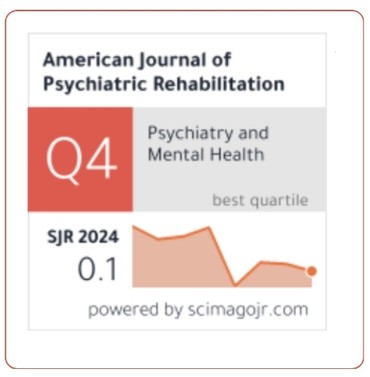Study Of Prevalence Of Vesicoureteric Reflux And Renal Scarring In Children With Urinary Tract Infection
DOI:
https://doi.org/10.69980/ajpr.v28i5.378Keywords:
Urinary Tract Infections, Vesico-Ureteral Reflux, Kidney, Renal Scarring, Dimercaptosuccinic Acid, Voiding Cystourethrography, Child, Pyelonephritis, Risk Factors, UltrasonographyAbstract
Objective: To determine the prevalence of vesicoureteric reflux (VUR) and renal scarring in children with urinary tract infection (UTI) and identify associated risk factors.
Methods: A cross-sectional observational study was conducted on 50 children (aged 0-12 years) with confirmed UTI at a tertiary care hospital from January 2023 to December 2024. All children underwent renal-bladder ultrasonography, voiding cystourethrogram (VCUG), and dimercaptosuccinic acid (DMSA) renal scintigraphy. VUR was graded according to the International Reflux Study Committee classification, and renal scarring was defined as persistent defects on follow-up DMSA scan performed 6 months after the acute infection. Risk factors for renal scarring were identified using multivariate logistic regression analysis.
Results: The study population comprised 36 females (72%) and 14 males (28%), with most children (46%) aged 1-5 years. The overall prevalence of VUR was 42%, with unilateral reflux (26%) being more common than bilateral reflux (16%). VUR prevalence was highest in infants under 1 year (55.6%) and decreased with age. Renal scarring was detected in 34% of children, with unilateral scarring (70.6%) predominating. A strong association was found between VUR and renal scarring (61.9% vs. 13.8%, p<0.001), with all children with high-grade VUR (Grades III-V) developing renal scarring compared to only 27.3% with low-grade VUR. Multivariate analysis identified high-grade VUR (OR: 8.7, p<0.001), recurrent UTIs (OR: 3.2, p=0.001), age less than 1 year (OR: 2.8, p=0.003), and delayed antibiotic treatment (OR: 2.5, p=0.015) as significant independent risk factors for renal scarring.
Conclusion: VUR and renal scarring are common in children with UTI, with a significant association between high-grade reflux and permanent renal damage. Early diagnosis and prompt treatment of UTIs are critical, especially in high-risk groups, to prevent long-term renal sequelae.
References
1. Blumenthal I. Vesicoureteric reflux and urinary tract infection in children. Postgrad Med J. 2006;82(963):31-35.
2. National Institute of Diabetes and Digestive and Kidney Diseases. Vesicoureteral Reflux (VUR). 2025.
3. Peru H, Bakkaloglu SA, Soylemezoglu O, et al. The relationship between urinary tract infections and vesicoureteral reflux in Turkish children. Int Urol Nephrol. 2009;41(4):947-51.
4. Chang JW, Liu CS, Tsai HL. Vesicoureteral Reflux in Children with Urinary Tract Infections in the Inpatient Setting in Taiwan. Clin Epidemiol. 2022;14:299-307.
5. Mattoo TK, Chesney RW, Greenfield SP, et al. The pathogenesis and management of renal scarring in children with vesicoureteric reflux and pyelonephritis. J Pediatr. 2022;241:196-203.
6. Karmazyn BK, Alazraki AL, Anupindi SA, et al. ACR Appropriateness Criteria: Urinary Tract Infection—Child. J Am Coll Radiol. 2017;14(5):S362-S371.
7. Pokrajac D, Sefic-Pasic I, Begic A. Vesicoureteral reflux and its relationship to renal scarring. Med Arch. 2018;72(4):272-275.
8. Gordon I, Barkovics M, Pindoria S, et al. Primary vesicoureteric reflux as a predictor of renal damage in children hospitalized with urinary tract infection. J Pediatr. 2003;142(5):568-72.
9. Sung J, Skoog S. Surgical management of vesicoureteral reflux in children. Pediatr Nephrol. 2012;27(4):551-561.
10. Naseri M, Tafazoli N, Tafazoli N. Prevalence of Vesicoureteral Reflux in Children with Urinary Tract Infection. Saudi J Kidney Dis Transpl. 2022;33(Supplement):S111-S120. doi:10.4103/1319-2442.384183
11. Elder JS, Peters CA, Arant BS Jr, et al. Pediatric Vesicoureteral Reflux Guidelines Panel summary report on the management of primary vesicoureteral reflux in children. J Urol. 1997;157(5):1846-1851.
12. Sargent MA. What is the normal prevalence of vesicoureteral reflux? Pediatr Radiol. 2000;30(9):587-593.
13. Saraga M, Staničić A, Marković V. The role of direct radionuclide cystography in evaluation of vesicoureteral reflux. Scand J Urol Nephrol. 1996;30(5):367-371.
14. Ajdinović B, Jauković L, Krstić Z, Dopuda M. Technetium-99m-dimercaptosuccinic acid renal scintigraphy in children with urinary tract infections. Hell J Nucl Med. 2006;9(1):27-30.
15. Shaikh N, Ewing AL, Bhatnagar S, Hoberman A. Risk of renal scarring in children with a first urinary tract infection: a systematic review. Pediatrics. 2010;126(6):1084-1091.
16. Swerkersson S, Jodal U, Sixt R, Stokland E, Hansson S. Relationship among vesicoureteral reflux, urinary tract infection and renal damage in children. J Urol. 2007;178(2):647-651.
17. Taskinen S, Rönnholm K. Post-pyelonephritic renal scars are not associated with vesicoureteral reflux in children. J Urol. 2005;173(4):1345-1348.
18. Shaikh N, Mattoo TK, Keren R, et al. Early antibiotic treatment for pediatric febrile urinary tract infection and renal scarring. JAMA Pediatr. 2016;170(9):848-854.
19. Pecile P, Miorin E, Romanello C, et al. Age-related renal parenchymal lesions in children with first febrile urinary tract infections. Pediatrics. 2009;124(1):23-29.
20. Hewitt IK, Zucchetta P, Rigon L, et al. Early treatment of acute pyelonephritis in children fails to reduce renal scarring: data from the Italian Renal Infection Study Trials. Pediatrics. 2008;122(3):486-490.
21. Preda I, Jodal U, Sixt R, Stokland E, Hansson S. Normal dimercaptosuccinic acid scintigraphy makes voiding cystourethrography unnecessary after urinary tract infection. J Pediatr. 2007;151(6):581-584.
Downloads
Published
Issue
Section
License
Copyright (c) 2025 American Journal of Psychiatric Rehabilitation

This work is licensed under a Creative Commons Attribution 4.0 International License.
This is an Open Access article distributed under the terms of the Creative Commons Attribution 4.0 International License permitting all use, distribution, and reproduction in any medium, provided the work is properly cited.









